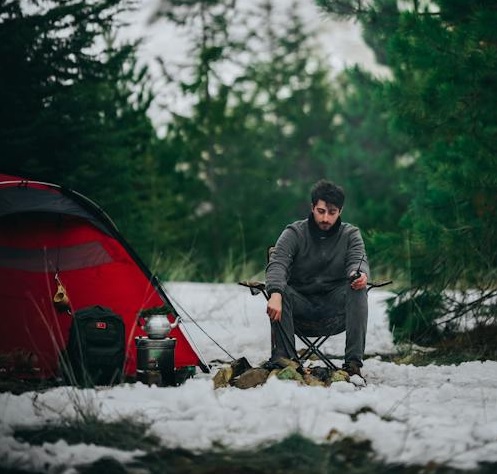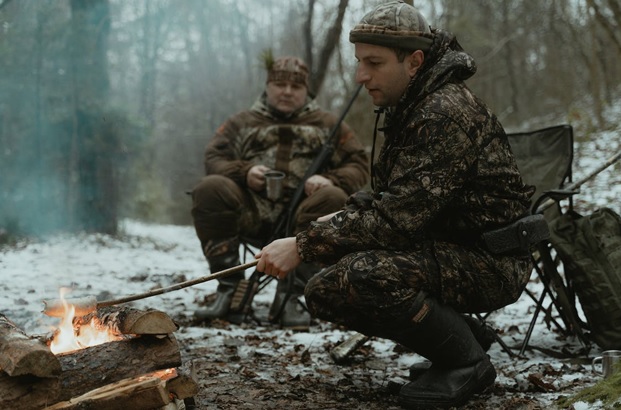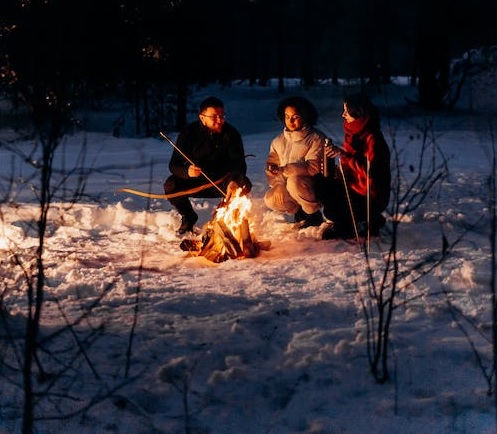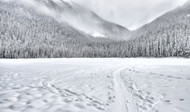Winter Camping: Staying Warm When the Temps Plummet
Posted by: Fatigues Army Navy Outdoor Gear on 13th Mar 2024
Some online guides will tell you that camping when it’s too cold, say, below 40℉, is not a good choice because you’ll be too cold to enjoy it.
Only you know your cold weather tolerance and limits, but where we are, it routinely gets colder than that in the winter, and as long as you are prepared, there’s no reason why you can’t enjoy some cold-weather camping - even at temperatures much below that.
Be ready with these tips.
Dress Appropriately
When it’s cold out, below freezing, it’s more important to dress in several warm layers than wear one insulative shell.
Start with a warm base layer made of a performance synthetic or wool which will either wick away sweat or adsorb it to keep you warm. Cold weather thermal underwear and red union suits are good for this.
Next wear a thick, insulative mid layer to add the most insulative protection, followed by a thicker, waterproof, windproof shell that adds more insulation. Insulated bibs and cold weather insulated coveralls are a good choice for an outer shell.
Wool and synthetics are good. Avoid cotton, which easily absorbs moisture and will suck heat out of you if it gets wet.
Wear Liner Socks and Gloves
Your boots must be rated appropriately according to the conditions you expect, as should your gloves, but you shouldn’t stop there.
You should also wear liner socks and gloves to add some extra protection. Silk socks are a good bet, as are wool gloves.
Use Hand Warmers As Needed
Not everyone needs them, but if you need a little boost to keep your extremities warm, chemical or electronic hand and toe warmers can be a true blessing.

Stay Moving
During the day, stay busy cooking, hiking, cutting firewood - whatever it takes to keep your blood moving.
Keeping active will ensure healthier circulation and will burn more calories, raising your core temperature and keeping you warm.
Just make sure not to overexert yourself because it can be very dangerous to make yourself sweat in the cold.
Stay Fueled and Hydrated
You burn far more calories in the cold trying to stay warm than you do in the summer. Eat high energy snacks throughout the day to keep your caloric needs met. High-energy dry foods like nuts and granola are a great option, as are dried meats like jerky.
You also lose a lot of moisture in the cold, which is problematic because staying hydrated helps to regulate your body temperature. Make sure you drink at least 8 cups of water per day even if you don’t feel thirsty.
Keep Your Boots on
If it’s really cold out, instead of taking your boots off before you get into your sleeping bag, brush off the snow and dirt and just wear them to bed. This move, though unconventional, will help prevent you from getting cold feet (no pun intended) right before bed.
Worst case scenario, you’ll just have to flip your sleeping bag inside out and give it a more thorough cleaning when you get home.
A Note on Sleeping Pads (Double Up)
Never sleep on the ground; always bring a closed-cell foam sleeping pad with you (with an R-value higher than 5) and sleep on that.
Actually, a good technique is to double up on the sleeping pad. Honestly, that would be a lot to carry if you’re backpacking, but it’s no big deal for car campers.
Fluff Your Sleeping Bag Before Sleep
It goes without saying that you should only bring along a sleeping bag that’s rated appropriately for the weather.
But you also need to know how to prepare it before bed. Don’t just unroll it and snuggle up. You should also fluff it out before going to bed because many sleeping bags have insulation that works by trapping air.
That is - the more fluffed they are, the warmer they will keep you.
Cover Your Face Before Sleeping
Do not burrow into your sleeping bag before going to bed because this will trap the moisture from each breath you exhale in your sleeping bag.
After a few hours, that will make your clothing wet, and that is extremely dangerous in the cold.
However, you can still cover your face with a ski mask or a balaclava, or cinch the opening of the sleeping bag’s hood close around your nose and mouth - that will keep the rest of your face warm.
Stay Dry

Take pains to avoid becoming wet as a result of the environment, as this can be dangerous in the cold, but equally important is that you don’t work too hard, because if you do and you sweat, eventually that will cool your core temperature off and that can be quite dangerous.
Vent the Tent
Unless it is raining or snowing heavily, keep the tent’s windows and vents open. This will prevent condensation from collecting on the walls of the tent and then soaking your gear and clothing - which as mentioned multiple times already, is quite dangerous.
Go Before Bed
Not only will holding it in make you uncomfortable and adversely affect your sleep quality, but you don’t want to leave the tent in the middle of the night. Go, even if you think you don’t need to.
Bring a Hot Water Bottle in Your Sleeping Bag
But, avoid placing it at your toes like some guides suggest. Keep it by your core so that it keeps you warm.

…And an Empty One
The reason here is that if you do need to relieve yourself in the middle of the night it will be difficult to get warm again once you return to the tent. Bring an empty disposable water bottle along and use that in the middle of the night if you need to.
Have an Effective Way to Carry All Your Gear, Like an ALICE Pack
If you aren’t car camping, you need an effective way to carry all of your gear, like an ALICE pack.
ALICE packs (and MOLLE packs, too) are useful for carrying all of your winter camping gear because they have a frame that distributes weight well, along with a bunch of divided pockets making it easy to store and organize your gear.
Unless, of course, you are car camping, in which case it matters little.

Gear Up for Winter Camping Here
There’s still another solid month or two of cold temperatures up our way. Before you venture out again, gear up with our long johns, sleeping pads, wool blankets, sweaters, and other cold weather essentials.

